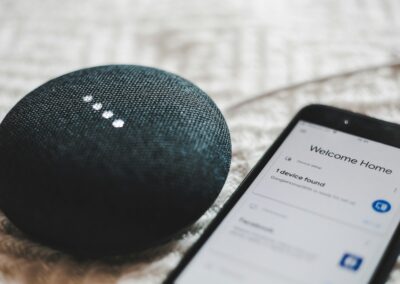Transforming Education Through Flipped Classroom Models
Flipped classroom models have emerged as a transformative approach to education, flipping the traditional classroom structure by delivering instructional content online and shifting homework and activities to the classroom. This innovative pedagogical strategy allows students to engage with course materials at their own pace, collaborate with peers, and receive personalized support from educators. By leveraging technology to deliver pre-recorded lectures, interactive tutorials, and multimedia resources, flipped classroom models promote active learning, critical thinking, and student-centered instruction. In Saudi Arabia and the UAE, where education is a top priority for national development, the adoption of flipped classroom models has gained traction as a means to enhance teaching effectiveness, improve student outcomes, and prepare learners for success in the digital age.
The Role of Technology in Flipped Classroom Implementation
Central to the success of flipped classroom models is the effective integration of technology into teaching and learning practices. Technology serves as the cornerstone of flipped classroom implementation, providing educators with the tools and resources needed to create engaging and interactive learning experiences. Virtual learning platforms, such as learning management systems (LMS) and online collaboration tools, play a pivotal role in delivering instructional content, facilitating discussions, and assessing student progress. These platforms enable educators to curate multimedia resources, design interactive activities, and track student participation, fostering a dynamic and inclusive learning environment.
Moreover, technology enables educators to personalize instruction and support diverse learning needs within the classroom. Adaptive learning technologies, intelligent tutoring systems, and data analytics tools empower educators to tailor instruction to individual students’ learning styles, preferences, and abilities. By leveraging data-driven insights, educators can identify areas of strength and weakness, provide targeted interventions, and scaffold learning experiences to ensure student success. Additionally, technology facilitates communication and collaboration between educators, students, and parents, fostering a culture of engagement, accountability, and continuous improvement.
Benefits and Implications for Education
The adoption of flipped classroom models supported by technology offers numerous benefits for education stakeholders and society as a whole. For educators, flipped classrooms provide opportunities to engage students in deeper learning experiences, foster critical thinking skills, and cultivate a growth mindset. By flipping the traditional lecture-based format, educators can devote more classroom time to active learning activities, collaborative projects, and hands-on exploration, fostering a culture of inquiry and discovery.
Furthermore, flipped classroom models promote student agency, autonomy, and self-directed learning, empowering learners to take ownership of their educational journey. Students have the flexibility to review instructional materials at their own pace, seek clarification on challenging concepts, and explore topics of interest independently. This personalized approach to learning not only enhances student motivation and engagement but also cultivates lifelong learning habits and skills essential for success in the 21st century.
Optimizing Education with Flipped Classroom Technology
The integration of technology in flipped classroom models not only enhances the learning experience for students but also empowers educators to innovate and adapt their teaching practices. With access to a diverse array of digital tools and resources, educators can design engaging and interactive learning experiences that cater to the diverse needs and preferences of learners. From interactive multimedia presentations to online discussion forums and virtual simulations, technology enables educators to create dynamic and immersive learning environments that foster creativity, critical thinking, and collaboration.
Furthermore, technology facilitates communication and collaboration among educators, students, and parents, creating a supportive ecosystem for teaching and learning. Virtual learning platforms, such as learning management systems (LMS) and communication apps, enable educators to share resources, communicate expectations, and provide timely feedback to students. Additionally, technology allows educators to track student progress, monitor engagement, and identify areas for intervention, ensuring that all students have the support they need to succeed.
Incorporating technology into flipped classroom models not only enhances the efficiency and effectiveness of instruction but also opens up new possibilities for educational innovation and advancement. By embracing technology as a tool for teaching and learning, educators can create more engaging, interactive, and personalized learning experiences that meet the diverse needs of students in Saudi Arabia, the UAE, and beyond.
#FlippedClassroom #EducationTechnology #SaudiArabia #UAE #EdTech #DigitalLearning #StudentEngagement #21stCenturySkills























